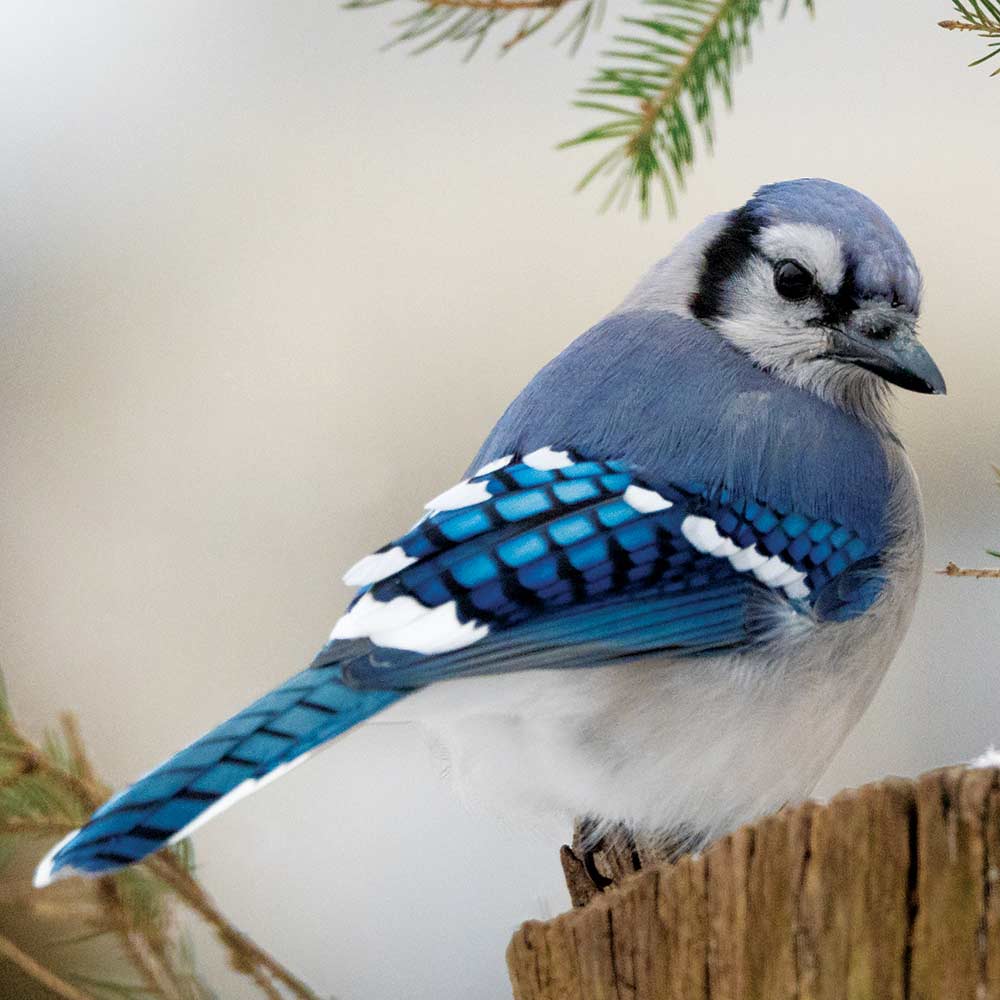Big, Blue & LOUD: The Blue Jay
The Great Outdoors | January 6, 2023

By Jackie Scharfenberg, Forest Naturalist, Wisconsin Department of Natural Resources
Jeer, jeer, jeer, jeer! What are you doing in my territory?
Oh, you’re the one who fills the bird feeder. Sorry for the alarm call and thanks for keeping your feeders filled and cleaned for us. I appreciate your heated bird bath, especially on these freezing winter days. You know us blue jays (Cyanocitta cristata) love stable platform feeders filled with sunflower seeds and raw peanuts. Many folks think of us as large and in charge, but to tell the truth, we often get pushed around by other birds and squirrels. Sometimes we mimic a hawk call to scatter those other species from the feeder just so we can grab a few nuts and seeds.
Our Diet
As omnivores, we eat all kinds of food. About 22 percent of our diet includes insects, small vertebrates, and a few bird eggs and nestlings. The bulk of our diet consists of acorns, other nuts, fruits, and grains. We even cache nuts and seeds for when our food supplies become low. To accomplish this, we use a special gular pouch in our throat and upper esophagus that allows us to carry two to three nuts in it along with one in our mouth and one at the tip of our bill. We take those nuts and bury them.
Our Size & Appearance
We may look like the biggest bird at your feeds, but we range in size between a crow and robin measuring about 10 -12 inches from beak to the end of our long, rounded tail. We weigh only 2.5-3.5 ounces; less than an average candy bar. Check out our white/gray underbelly and various shades of blue, black, and white above. Our eyes, legs, feet, and beak are black. The black “bridle” across our face, nape, and throat varies a lot between individuals and may help us recognize one another. Our most identifiable feature is our head crest.
How We Communicate
We communicate with a wide variety of different vocalizations from our “whisper song,” a soft, quiet conglomeration of clicks, chucks, whirrs, whines, liquid notes, and elements of other calls, to loud raucous “jeers,” whistled notes, and gurgling sounds. We also mimic hawks, other bird calls, and even meowing cats, and human voices. We use our crest to communicate as well. When feeding, tending our young, and associating with flock members, we lower our crest. When feeling aggressive, we raise it. When frighted, we raise and bristle it out.
Fun Facts:
- Our blue feathers only look blue because of light scattering through modified cells on the surface of each feather barb. If you crushed our feathers, they would look brown because of the pigment melanin found within them.
- We possess the uncanny knack of finding acorns free of weevils. Because of this trait, scientists credit us with helping to spread oaks after the last glacial period. Pretty cool, right?
Look for us from southern Canada to the Gulf of Mexico anywhere east of the Rocky Mountains. We prefer forest edges and open woods with lots of oak trees, but also towns, cities, and parks.



